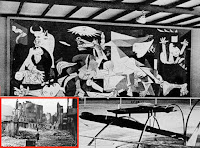Reign of Alfonso XIII
REIGN OF ALFONSO XIII: At that time the reign of Alfonso XIII was in force, which took place in 1902, after the fulfillment of the majority of age until 1931, once the Second Republic was proclaimed. During his reign, numerous problems took place, which caused the strongest crises of the restoration system.Regarding the politics of his reign, he had the Cánovas System, which highlights the turn of parties or bipartisanship where the conservative and liberal party was. On the other hand, the republican, nationalist and labor movements grew because of social discontent due to the crisis.At the same time, society and economy have signs of modernization, which was one of the objectives of Alfonso XIII at the beginning of his reign. FIRST WORLD WAR (1914-1918): This first international conflict was occasioned by the assassination of Archduke Franz Ferdinand, heir to the imperial throne of Austria-Hungary, with his wife the Duchess of Hohenberg in the city of Sarajevo, ...



